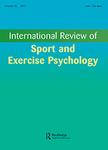版权所有:内蒙古大学图书馆 技术提供:维普资讯• 智图
内蒙古自治区呼和浩特市赛罕区大学西街235号 邮编: 010021

作者机构:Queens Univ Sch Kinesiol & Hlth Studies Kingston ON Canada Univ Georgia Dept Psychol Athens GA 30602 USA Univ Birmingham Sch Sport Exercise & Rehabil Sci Birmingham W Midlands England Western Univ Dept Psychol London ON Canada Nipissing Univ Schulich Sch Educ North Bay ON Canada
出 版 物:《INTERNATIONAL REVIEW OF SPORT AND EXERCISE PSYCHOLOGY》 (Int. Rev.Sport Exerc. Psychol.)
年 卷 期:2021年第14卷第1期
页 面:260-277页
核心收录:
基 金:Social Sciences and Humanities Research Council of Canada Insight [435-2016-0591]
主 题:Behavioural observation coding system social identity moral behaviour youth sport
摘 要:The interactions between athletes, parents, and coaches outside of the immediate training and competition environments can shape sport participants overall experiences. Accordingly, researchers have explored novel approaches that enable the investigation of experiences that occur beyond the sport activity itself. Technological innovations, combined with careful ethical considerations, have led to the development of research methods that can be used to assess participant conversations in their natural sport and social environments. This article introduces sport researchers to the Electronically Activated Recorder (EAR), an ambulatory ecological assessment method that provides access to daily social interactions among athletes, parents, and coaches within and beyond the immediate sport activity (e.g. commute to/from activity, locker rooms, hotels). The EAR software is embedded within a portable device (e.g. Android device) and is programmed to record brief segments of audio from participants daily lives. In addition to discussing the utility of this approach for sport contexts, we introduce the Audio Coding System for Social Environments in Sport (ACSSES), which was developed to assess the interactions captured from athletes natural sport and social environments using the EAR. Evidence for the reliability and validity of the ACSSES, the associated coder training protocol, and proposed implications for research are discussed.